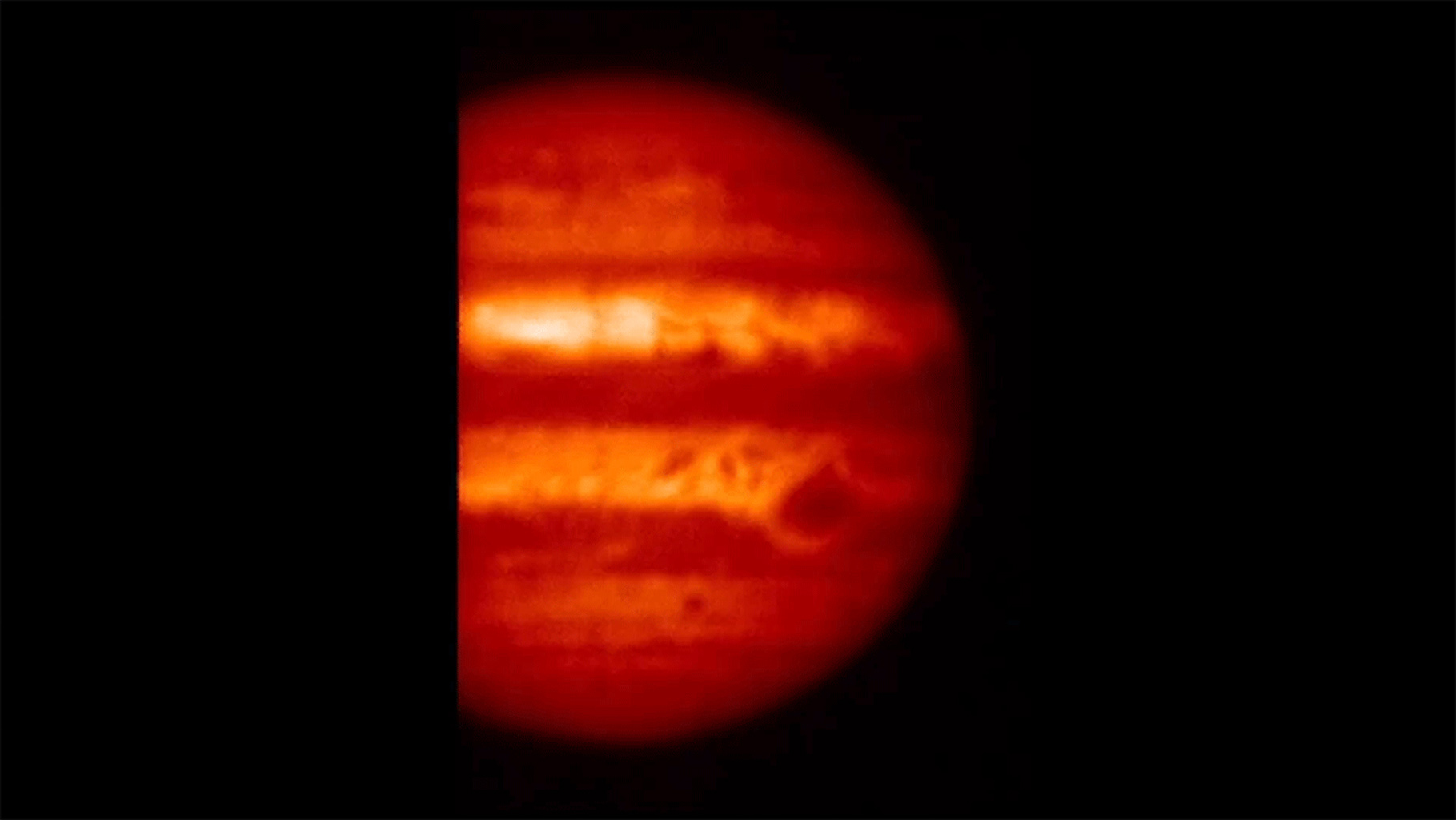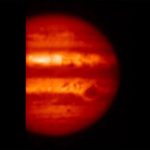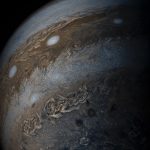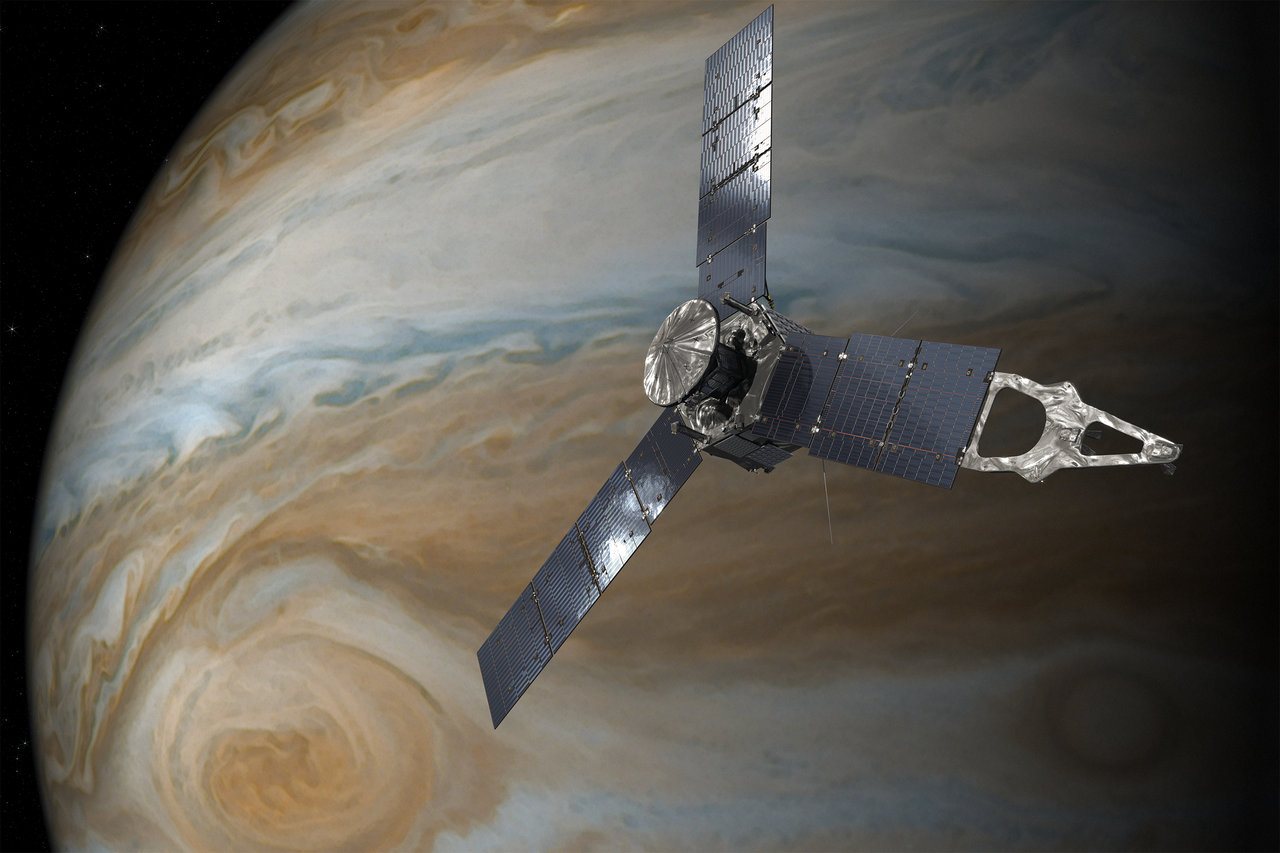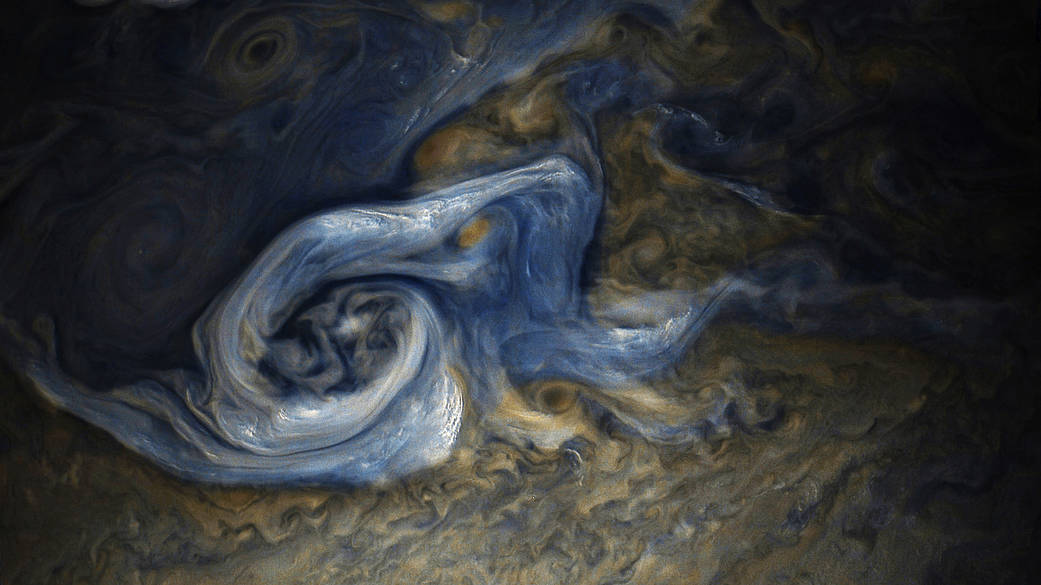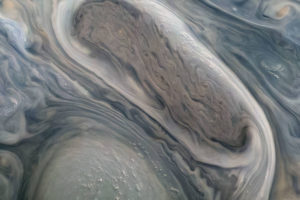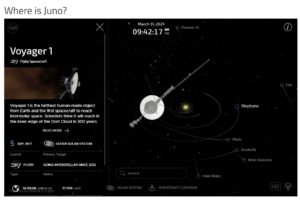This animation shows Jupiter as revealed by a powerful telescope and a mid-infrared filter sensitive to the giant planet’s tropospheric temperatures and cloud thickness. It combines observations made on Jan. 14, 2017, using the Subaru Telescope in Hawaii.
Credits: NAOJ/NASA/JPL-Caltech
ハワイから見た最新木星画像
いよいよ2017年7月10日にNASAの木星探査機ジュノーが木星の最大の謎の一つ大赤斑上空を通過します。
もちろん最新測定機器による観測が実施されますので、期待に胸が高鳴ります。
今回NASAが公開したのはジュノーではなく、地球上の観測による木星の最新画像です。
2017年1月14日のハワイのすばる望遠鏡による赤外線フィルターを使用した望遠鏡観測画像です。
地球上の観測所の観測機器の性能も向上しており、なかなかの画像ですが、きっと7月10日にはジュノーによるさらに衝撃的な画像が得られるのでは…
2017年5月18日にハワイの撮影されたすばる望遠鏡、ジェミニ望遠鏡による最新画像はこちら
2017.07.01:地球から赤外線観測した木星の最新画像【静止画】
Earth-based Views of Jupiter to Enhance Juno Flyby

Telescopes in Hawaii have obtained new images of Jupiter and its Great Red Spot, which will assist the first-ever close-up study of the Great Red Spot, planned for July 10. On that date, NASA’s Juno spacecraft will fly directly over the giant planet’s most famous feature at an altitude of only about 5,600 miles (9,000 kilometers).
ハワイにある望遠鏡が木星と大赤斑の新しい画像を撮影しました。これは7月10日に予定されている大赤斑の初めての近接観測の支援となります。その日、NASAのジュノー探査機は木星の最大の特徴である大赤斑上空わずか5,600マイル(9,000キロメートル)の高度を通過します。
Throughout the Juno mission, numerous observations of Jupiter by Earth-based telescopes have been acquired in coordination with the mission, to help Juno investigate the giant planet’s atmosphere. On May 18, 2017, the Gemini North telescope and the Subaru Telescope, both on Hawaii’s Mauna Kea peak, simultaneously examined Jupiter in very high resolution at different wavelengths. These latest observations supplement others earlier this year in providing information about atmospheric dynamics at different depths at the Great Red Spot and other regions of Jupiter.
ジュノーのミッションの中で、ジュノーが巨大惑星である木星の大気を観測する手助けとするため、地球上の望遠鏡による木星のおびただしい数の観測が実施されています。 2017年5月18日にジェミニ北望遠鏡とすばる望遠鏡(両方ともハワイのマウナケアの山頂にあります)は、同時に異なる波長で木星を超高解像度観測しました。これらの最新の観測を、今年初めに実施された他のデータと合わせ、大赤斑や木星の他の地域で異なる深さの大気の動態に関する情報としてまとめることができました。
The Great Red Spot is a swirling storm, centuries old and wider than the diameter of Earth. Juno will use multiple instruments to study this feature when it flies over it about 12 minutes after the spacecraft makes the closest approach to Jupiter of its current orbit at 6:55 p.m. on July 10, PDT (9:55 p.m. on July 10, EDT; 1:55 a.m. on July 11, Universal Time). Juno entered orbit around Jupiter on July 4, 2016.
大赤斑は渦巻き状の嵐であり、何世紀も前から存在し、地球の直径よりも大きなものです。ジュノー探査機は、7月10日PDTで午後6時55分(EDTで7月10日午後9時55分、UTCで7月11日午後1時55分)に現在の軌道から木星に最も近い地点に移動した後、約12分後に大赤斑の観測を複数の観測機器により開始します。ジュノーは2016年7月4日に木星周回軌道に到達しています。
“Observations with Earth’s most powerful telescopes enhance the spacecraft’s planned observations by providing three types of additional context,” said Juno science team member Glenn Orton of NASA’s Jet Propulsion Laboratory, Pasadena, California. “We get spatial context from seeing the whole planet. We extend and fill in our temporal context from seeing features over a span of time. And we supplement with wavelengths not available from Juno. The combination of Earth-based and spacecraft observations is a powerful one-two punch in exploring Jupiter.”
「地球における最も強力な望遠鏡による観測で、3種類の追加情報を得て探査機の観測計画を更新することができました。」 と、NASAのJPLのジュノー・サイエンスチームのメンバーであるグレン・オートン氏が言いました。「私たちは、木星全体を俯瞰する空間的な情報を得られました。時間軸の流れを拡張し、必要な観測項目を埋め込むことができたのです。なにせジュノーでは観測に使用していない波長によるデータを補うことができたのですから。木星を観測するのに、地球上の観測結果と探査機の観測結果でワン・ツーパンチになります。
Orton collaborated with researchers at Gemini; Subaru; the University of California, Berkeley; Tohoku University, Japan; and elsewhere in planning the recent observations.
The observers used Gemini North on May 18 to examine Jupiter through special near-infrared filters. The filters exploit specific colors of light that can penetrate the upper atmosphere and clouds of Jupiter, revealing mixtures of methane and hydrogen in the planet’s atmosphere. These observations showed a long, fine-structured wave extending off the eastern side of the Great Red Spot.
On the same night, researchers used Subaru’s Cooled Mid-Infrared Camera and Spectrometer (COMICS), with filters sensitive to temperatures at different layers of Jupiter’s atmosphere. These mid-infrared observations showed the Great Red Spot “had a cold and cloudy interior increasing toward its center, with a periphery that was warmer and clearer,” Orton said. “A region to its northwest was unusually turbulent and chaotic, with bands that were cold and cloudy, alternating with bands that were warm and clear.”
For more information about the National Astronomical Observatory of Japan’s Subaru Telescope, visit:
https://subarutelescope.org/
For more information about the Gemini Observatory, a partnership of the United States, Canada, Brazil, Argentina and Chile, visit:
https://www.gemini.edu/
JPL manages the Juno mission for the principal investigator, Scott Bolton, of Southwest Research Institute in San Antonio. The Juno mission is part of the New Frontiers Program managed by NASA’s Marshall Space Flight Center in Huntsville, Alabama, for the Science Mission Directorate. Lockheed Martin Space Systems, Denver, built the spacecraft. JPL is a division of Caltech in Pasadena, California. More information on the Juno mission is available at:
https://www.nasa.gov/juno
http://missionjuno.org
DC Agle / Guy Webster
Jet Propulsion Laboratory, Pasadena, Calif.
818-393-9011 / 818-354-6278
agle@jpl.nasa.gov / guy.webster@jpl.nasa.gov
Deb Schmid
Southwest Research Institute, San Antonio
210-522-2254
dschmid@swri.org
Yuko Kakazu
Subaru Telescope, Hilo, Hawaii
808-934-5960
kakazu@naoj.org
Peter Michaud
Gemini Observatory, Hilo, Hawaii
808-974-2510
pmichaud@gemini.edu
Laurie Cantillo / Dwayne Brown
NASA Headquarters, Washington
202-358-1077 / 202-358-1726
laura.l.cantillo@nasa.gov / dwayne.c.brown@nasa.gov
2017-185
Last Updated: July 1, 2017
Editor: Tony Greicius
